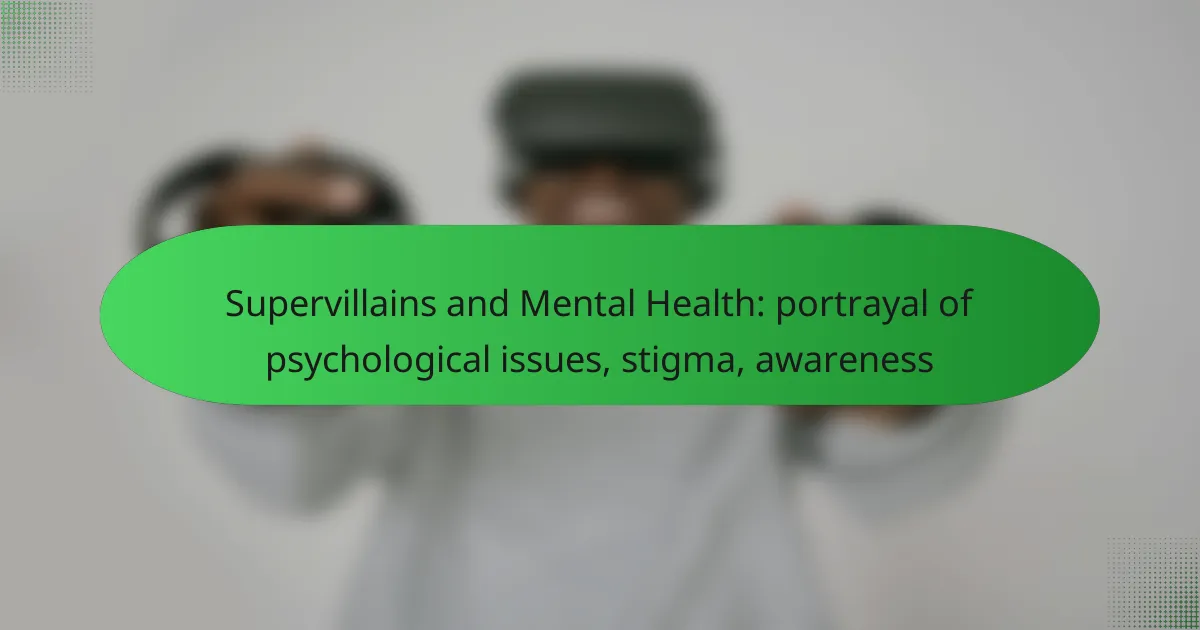The portrayal of supervillains in media frequently highlights complex psychological issues, often exaggerating traits like madness and obsession. While these characters serve as compelling antagonists, their depiction can inadvertently reinforce harmful stereotypes about mental health, overshadowing the reality of psychological conditions. By examining these portrayals, we can foster a deeper awareness of mental health issues and challenge the stigma surrounding them.

How are supervillains portrayed in media?
Supervillains in media are often depicted as complex characters with exaggerated psychological issues, serving as antagonists to heroes. Their portrayals frequently emphasize traits such as madness, obsession, and a desire for power, which can reinforce negative stereotypes about mental health.
Common traits of supervillains
Supervillains typically exhibit a range of common traits, including narcissism, a lack of empathy, and extreme intelligence. These characters often have a traumatic backstory that contributes to their villainous behavior, such as childhood abuse or social isolation. Their motivations can vary from personal vendettas to grandiose plans for world domination.
Additionally, many supervillains display obsessive behaviors and a fixation on their goals, which can lead to reckless decision-making. This portrayal can create a compelling narrative but often simplifies the complexities of real psychological conditions.
Impact of portrayal on public perception
The portrayal of supervillains can significantly influence public perception of mental health issues. When media depicts psychological disorders as synonymous with villainy, it can perpetuate stigma and fear surrounding mental illness. This can lead to misunderstandings about the nature of these conditions and the individuals who experience them.
Moreover, the sensationalized depiction of supervillains can overshadow the reality that many people with mental health issues are not violent or dangerous. This misrepresentation can hinder efforts to promote awareness and understanding, making it crucial for creators to approach these topics with sensitivity and accuracy.

What psychological issues are associated with supervillains?
Supervillains often embody a range of psychological issues that reflect both real and exaggerated mental health conditions. These portrayals can include disorders such as antisocial personality disorder, narcissistic personality disorder, and various forms of trauma, which contribute to their villainous behavior and motivations.
Common psychological disorders depicted
Many supervillains are characterized by antisocial personality disorder, which is marked by a disregard for others’ rights and a lack of empathy. This disorder can manifest in their manipulative and often violent behaviors. Additionally, narcissistic personality disorder is frequently portrayed, where the character exhibits grandiosity, a need for admiration, and a lack of empathy.
Other common disorders include post-traumatic stress disorder (PTSD), often stemming from significant past trauma, which can lead to erratic and destructive behavior. These psychological issues are dramatized in narratives, making them more extreme than what might be observed in real life.
Real-world implications of these portrayals
The depiction of supervillains with psychological disorders can contribute to the stigma surrounding mental health issues. When audiences see these characters as dangerous or evil due to their conditions, it reinforces negative stereotypes about individuals with similar disorders in reality.
Moreover, these portrayals can affect public perception and understanding of mental health. They may lead to misconceptions that individuals with psychological disorders are inherently violent or malicious, overshadowing the fact that most people with mental health issues are not dangerous and can lead fulfilling lives with appropriate support and treatment.
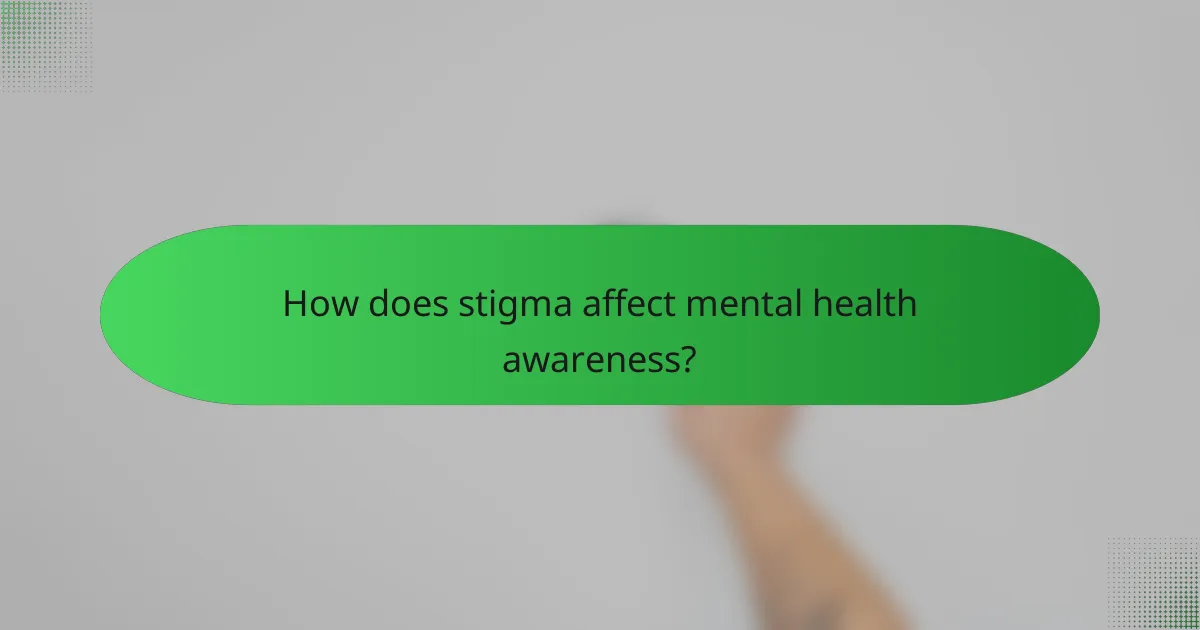
How does stigma affect mental health awareness?
Stigma significantly hinders mental health awareness by fostering negative perceptions and misconceptions about psychological issues. This can lead to discrimination, reduced access to care, and a reluctance among individuals to seek help.
Stigmatization of mental health in media
Media portrayals often reinforce stereotypes about mental health, depicting individuals with psychological issues as dangerous or unstable. This misrepresentation can perpetuate fear and misunderstanding, making it harder for society to accept mental health conditions as legitimate health issues. Positive representations are crucial; they can help normalize discussions around mental health and encourage empathy.
Consequences of stigma on individuals
The stigma surrounding mental health can lead to feelings of shame and isolation for those affected. Individuals may avoid seeking treatment due to fear of being judged, which can exacerbate their conditions and lead to a cycle of worsening mental health. Additionally, stigma can impact employment opportunities and personal relationships, further complicating recovery and support.
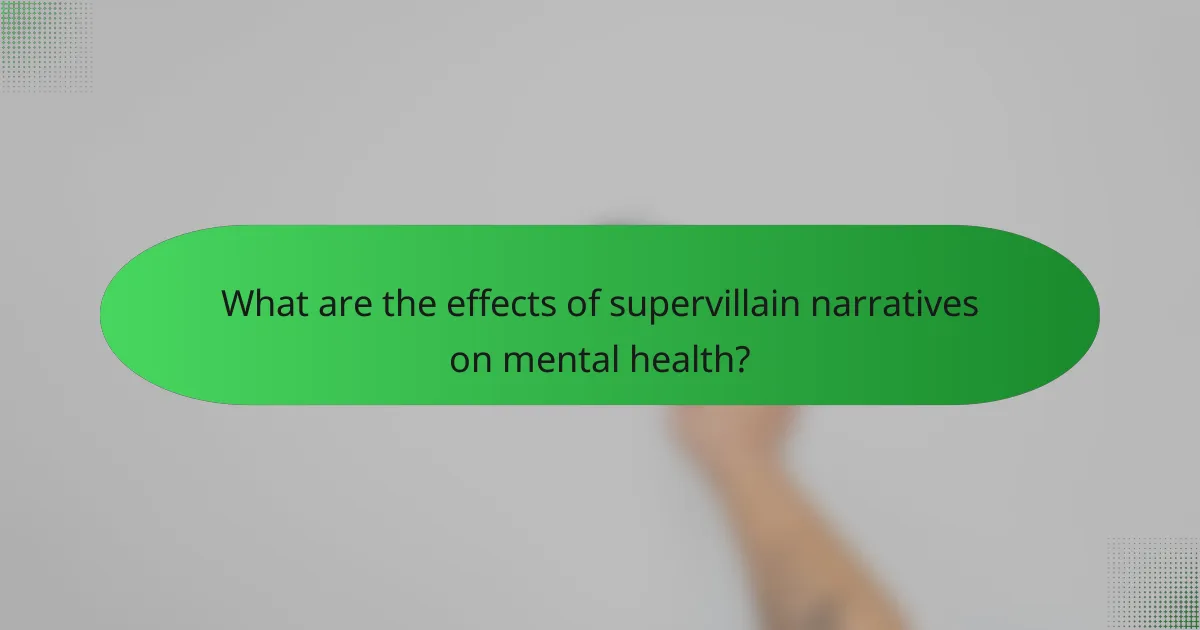
What are the effects of supervillain narratives on mental health?
Supervillain narratives can significantly shape perceptions of mental health, often reinforcing stigma and misconceptions. These portrayals may lead audiences to associate psychological issues with villainy, impacting societal attitudes toward individuals with mental health conditions.
Influence on audience perceptions
Supervillains are frequently depicted as having extreme psychological issues, which can skew audience perceptions of mental health. This portrayal may lead to a belief that individuals with mental health conditions are dangerous or malevolent, perpetuating harmful stereotypes.
For instance, characters like the Joker or Magneto may create a narrative that equates mental illness with criminality. Such representations can discourage open discussions about mental health and contribute to the stigma faced by those who seek help.
Potential for increased awareness
Despite the negative aspects, supervillain narratives can also serve as a platform for increased awareness about mental health issues. When creators explore the backstories of these characters, they often highlight the struggles and traumas that contribute to their villainous behavior.
By showcasing the complexities of these characters, audiences may gain a better understanding of the factors that influence mental health. This can foster empathy and encourage conversations about seeking help, ultimately reducing stigma and promoting awareness.
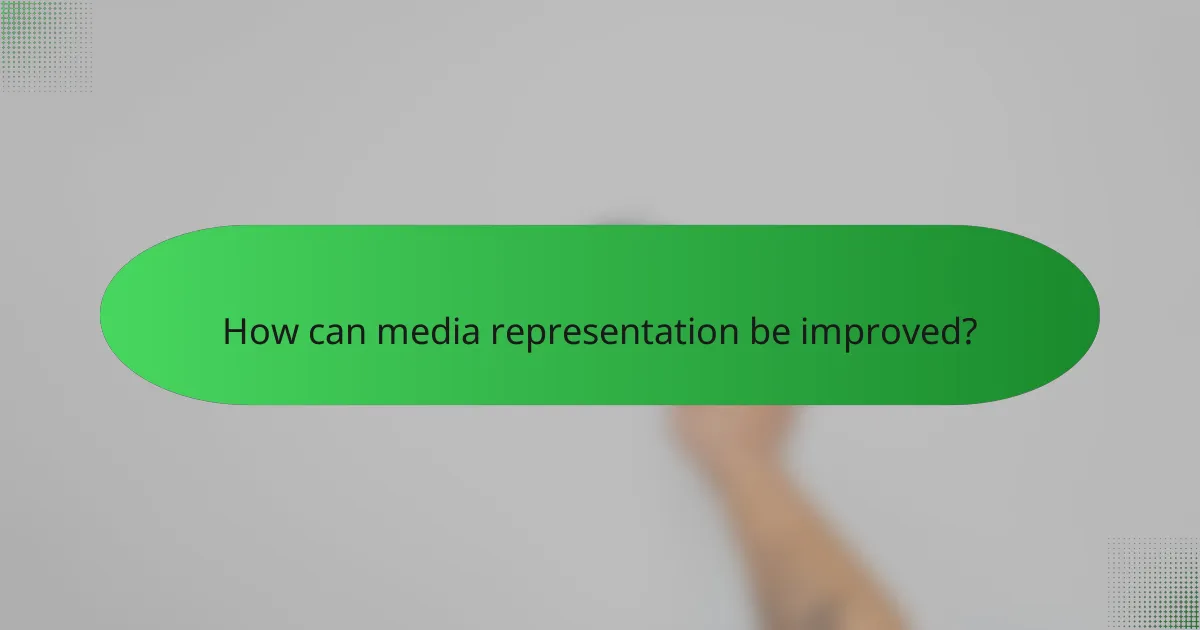
How can media representation be improved?
Media representation can be improved by prioritizing accurate and nuanced portrayals of supervillains with psychological issues. This involves collaborating with mental health professionals and ensuring that narratives do not reinforce harmful stereotypes or stigma.
Strategies for accurate portrayal
Accurate portrayal of supervillains requires a deep understanding of mental health conditions. Writers should research psychological disorders and consult with mental health experts to depict characters authentically. This approach helps avoid clichés and promotes a more realistic understanding of the complexities involved.
Additionally, incorporating diverse perspectives can enhance representation. Including characters from various backgrounds and experiences can prevent one-dimensional portrayals and foster empathy among viewers.
Examples of positive representation
One notable example of positive representation is the character of Harley Quinn in various media. Her journey from villain to anti-heroine highlights the impact of trauma and mental illness, showcasing her growth and resilience. This portrayal encourages discussions about mental health and recovery.
Another example is the animated series “Bojack Horseman,” which addresses mental health issues through its flawed characters. The show effectively illustrates the struggles of depression and addiction, promoting awareness and understanding among its audience.

What role do comic books play in mental health discussions?
Comic books serve as a unique medium for discussing mental health issues, often portraying complex psychological struggles through their characters. They can help reduce stigma by normalizing conversations around mental health and offering relatable narratives that resonate with readers.
Influential comic book characters
Several comic book characters have become symbols of mental health awareness due to their complex portrayals of psychological issues. For example, Batman’s struggle with trauma and grief highlights the impact of loss, while characters like the Hulk represent anger management and emotional turmoil. These figures often reflect real-life challenges, making them relatable to audiences.
Additionally, characters such as Moon Knight and Harley Quinn provide insights into dissociative disorders and borderline personality disorder, respectively. Their stories encourage readers to explore these conditions with empathy and understanding.
Comic book storylines addressing mental health
Many comic book storylines delve into mental health themes, offering narratives that educate and provoke thought. For instance, the “Batman: The Killing Joke” storyline explores the psychological effects of trauma and the blurred lines between sanity and insanity. Such narratives can foster discussions about mental health challenges and the importance of seeking help.
Another notable example is “Spider-Man: The Night Gwen Stacy Died,” which addresses grief and loss, illustrating how these experiences can affect one’s mental state. These storylines not only entertain but also serve as platforms for raising awareness and reducing stigma surrounding mental health issues.

How can we foster discussions about mental health through supervillains?
Fostering discussions about mental health through supervillains involves using their complex narratives to highlight psychological issues and reduce stigma. By presenting these characters as multifaceted individuals, we can encourage audiences to engage in meaningful conversations about mental health challenges.
Engaging audiences in conversations
Engaging audiences in conversations about mental health can be achieved by incorporating relatable supervillain stories that reflect real psychological struggles. For instance, a character with a traumatic past may resonate with viewers who have faced similar issues, prompting discussions about coping mechanisms and support systems.
Creating forums or panels where fans can discuss their interpretations of these characters can further enhance engagement. This could include online discussions, fan conventions, or community events that encourage sharing personal experiences and insights related to mental health.
Utilizing social media platforms
Social media platforms are powerful tools for fostering discussions about mental health through supervillains. By sharing content that explores the psychological dimensions of these characters, creators can spark conversations and raise awareness. For example, posting character analyses or mental health resources alongside popular supervillain imagery can attract attention and drive engagement.
Utilizing hashtags related to mental health and supervillains can help reach a broader audience. Campaigns that encourage users to share their thoughts or artwork inspired by these characters can also create a sense of community and support, making mental health discussions more accessible and relatable.
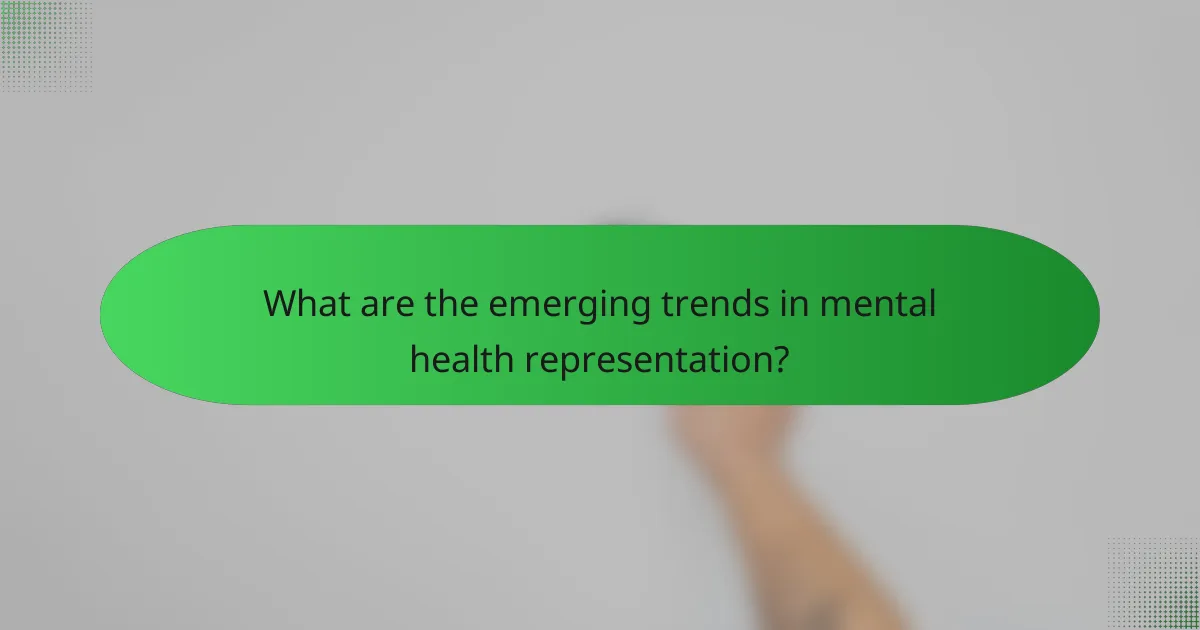
What are the emerging trends in mental health representation?
Emerging trends in mental health representation in media, particularly in superhero genres, focus on more nuanced portrayals of psychological issues. These narratives aim to reduce stigma and foster awareness by depicting characters with mental health challenges as complex individuals rather than mere villains.
Shifts in narrative focus
Recent shifts in narrative focus highlight the internal struggles of supervillains, often linking their malevolent actions to unresolved psychological issues. This approach allows audiences to empathize with characters who may have experienced trauma, neglect, or societal rejection, thus humanizing them rather than simply labeling them as evil.
For instance, characters like Harley Quinn and Magneto have been portrayed with backstories that explore their mental health challenges, making their motivations more relatable. This trend encourages viewers to consider the impact of mental health on behavior and decision-making, promoting a deeper understanding of these issues.
Future of mental health in superhero genres
The future of mental health representation in superhero genres looks promising, with more creators committed to authentic storytelling. As awareness grows, there is potential for more diverse characters who reflect a range of mental health experiences, moving beyond traditional tropes.
Producers and writers are increasingly collaborating with mental health professionals to ensure accurate depictions, which can help destigmatize psychological issues. This could lead to storylines that not only entertain but also educate audiences about mental health resources and the importance of seeking help.
